For you food fan lovers of the bold and spicy, this babe’s for you. Paired with the Green Rice side, this Turkey Cutlet and Black Beans with Tangerine-Habanero Mojo dinner is phenomenal! It definitely transports you out of the “same-old-thing” doldrums.
Mojo (pronounced MOE-hoe) is a Caribbean and Latin-American garlic, chile, and fruit sauce that pairs well with meat, poultry, and seafood. Here, it’s made with tangerine and lime, so it’s both sweet and tart. Problem was, the supermarket did not have ANY tangerines! So we used navel oranges instead. I would have substituted blood oranges, but they didn’t have those either—bummer.

Nor did the grocery store carry any turkey cutlets, but the butcher offered to slice down a turkey tenderloin into 1″ cutlets—perfect! Turkey tenderloins are the tender long strip of white meat hidden under the turkey breast. Because this strip of meat is an underused muscle of the turkey, it is very tender and excellent for recipes. This part of the bird typically has a low fat content and cooks very quickly.
When it comes to spicy, I’m on the front lines with the heat. So when the recipe called for 1/2 of a habanero, I added the whole pepper. And yes it definitely had a kick to it, so keep that in mind when determining your spicy tolerance.

Three sliced cloves of garlic and a whole minced habanero pepper are ready to make mojo.

All mojo ingredients reduce down slightly in the skillet.

Cooked mojo is poured into a bowl for serving purposes.
Ingredients
- 5 to 6 Tbs. extra-virgin olive oil
- 3 medium cloves garlic, thinly sliced
- 1/2 tsp. plus ₈ tsp. ground cumin
- 1/2 cup fresh tangerine juice (from 2 tangerines)
- 2 Tbs. fresh lime juice (from 1 lime)
- 1/2 tsp. seeded and minced habanero chile
- Kosher salt and freshly ground black pepper
- 1 small red onion, chopped
- One 151/2 -oz. can black beans, rinsed and drained
- 2 Tbs. chopped fresh cilantro
- 4 turkey breast cutlets (about 11/4 lb.)

After the black beans cook for several minutes in the onion, stir in the cilantro.
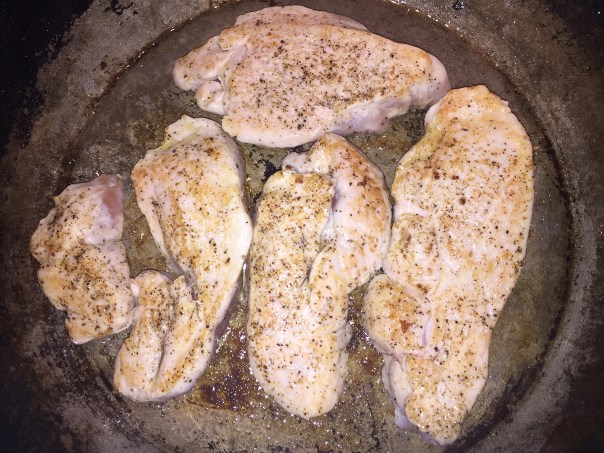
Turkey cutlets cook in an oiled skillet for 2-3 minutes per side.
Directions
- In a 10-inch skillet, heat 2 Tbs. of the oil and the garlic over medium heat until the garlic is golden, about 3 minutes. Stir in 1/₈ tsp. of the cumin. Add the tangerine juice, lime juice, and habanero. Bring to a simmer and cook for about 3 minutes. Season to taste with salt and pepper; set the mojo sauce aside. (The sauce can be served warm or at room temperature.)
- Heat 2 Tbs. of the oil in a 12-inch nonstick skillet over medium-high heat. Add the onion and 1/4 tsp. salt and cook, stirring occasionally, until softened, 3 to 5 minutes. Add the beans and the remaining 1/2 tsp. cumin and cook until the beans are heated through, 2 to 3 minutes. Stir in the cilantro and season to taste with salt and pepper. Transfer the beans to a bowl and cover with foil to keep warm.
- Wash and dry the skillet. Season the turkey cutlets on both sides with salt and pepper. Heat 1 Tbs. of the oil in the skillet over medium-high heat until very hot. Add as many cutlets as will comfortably fit in a single layer, and cook until browned on both sides and just cooked through, about 2-3 minutes per side. Transfer to a plate and tent with foil to keep warm. Repeat with the remaining cutlets, adding the remaining 1 Tbs. oil if needed.
- Divide the cutlets and black beans among individual plates. Spoon the mojo sauce over and serve.
Recipe by Dawn Yanagihara-Mitchell from Fine Cooking
Green Rice

After the rice mixture has cooked for 20 minutes, stir it carefully to avoid crushing it, cover, and cook another 5 minutes.
Ingredients
- 1/2 cup tightly packed fresh cilantro sprigs (about 1/2 oz.)
- 1 cup tightly packed fresh stemmed spinach leaves (about 1-1/2 oz.)
- 1-1/4 cups homemade or low-salt chicken broth
- 1-1/4 cups milk
- 1 tsp. kosher salt
- 1 Tbs. olive oil
- 3 Tbs. unsalted butter
- 1-1/2 cups long-grain rice
- 1/4 cup finely minced onion
- 1 clove garlic, minced
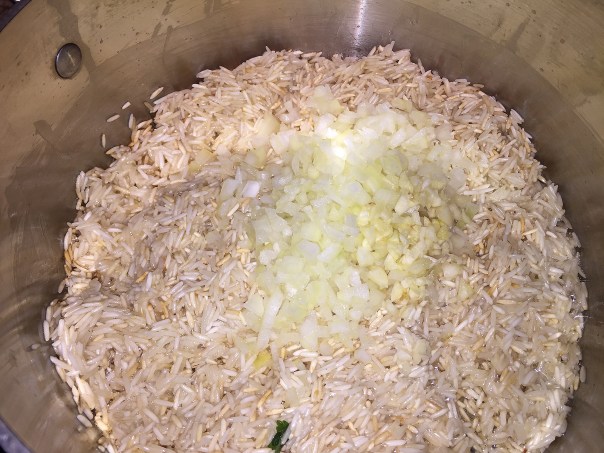
The rice will begin to brown in oil and butter after about 4 minutes, then add the onion and garlic.
 Put the cilantro, spinach, and broth in a blender and blend until the vegetables are puréed. Add the milk and salt and blend a bit more until well combined.
Put the cilantro, spinach, and broth in a blender and blend until the vegetables are puréed. Add the milk and salt and blend a bit more until well combined.

Add the contents of the blender, stir well, turn the heat to high, and bring to a boil.
Directions
- Put the cilantro, spinach, and broth in a blender and blend until the vegetables are puréed. Add the milk and salt and blend a bit more until well combined.
- In a medium (3-qt.) heavy-based saucepan (with a good lid) over medium heat, heat the olive oil and butter. When the butter is melted, add the rice and sauté, stirring about every 30 seconds, until it just begins to brown, 3 to 4 minutes.
- Add the onion and garlic and cook 1 minute, stirring constantly. Add the contents of the blender, stir well, turn the heat to high, and bring to a boil. Cover the pan, turn the heat to very low, and cook for 20 minutes. Stir the rice carefully to avoid crushing it, cover, and cook another 5 minutes.
- Take the pan off the heat and let the rice steam in the covered pot for 10 minutes. Serve hot.
by James Peyton from Fine Cooking




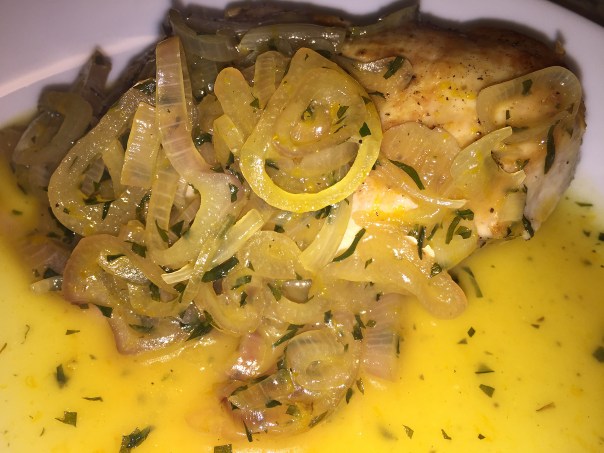





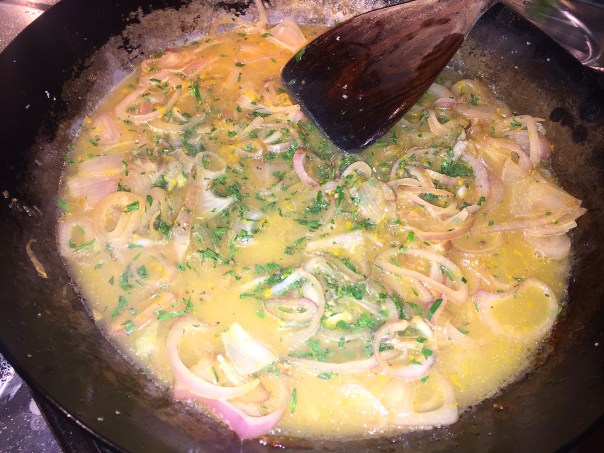
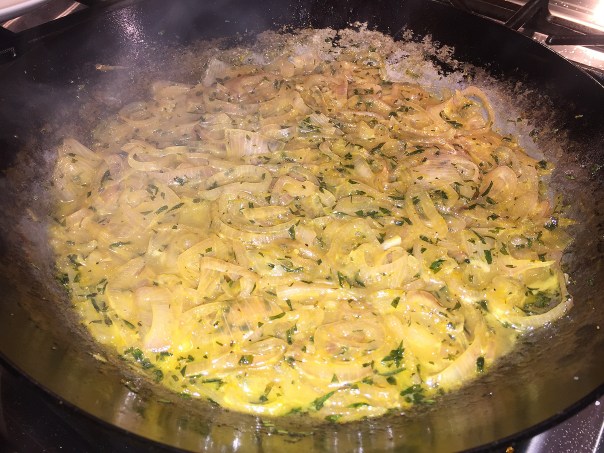





 This made a perfect meal, but add a side salad if desired.
This made a perfect meal, but add a side salad if desired.
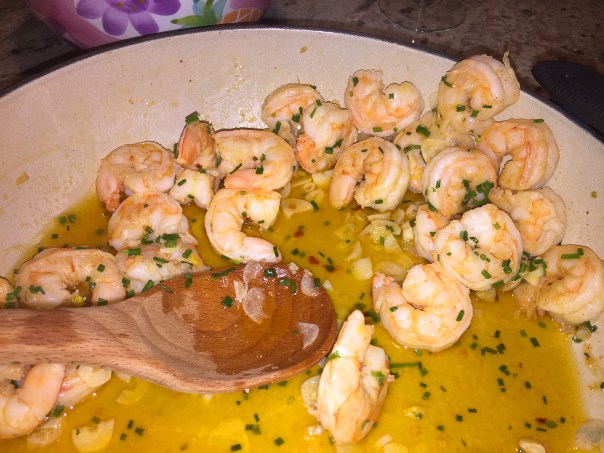
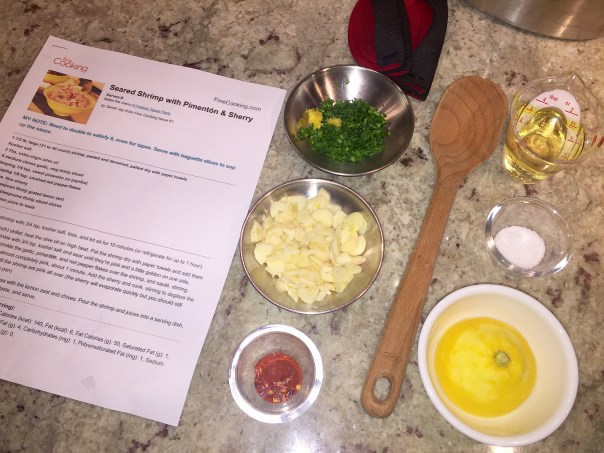







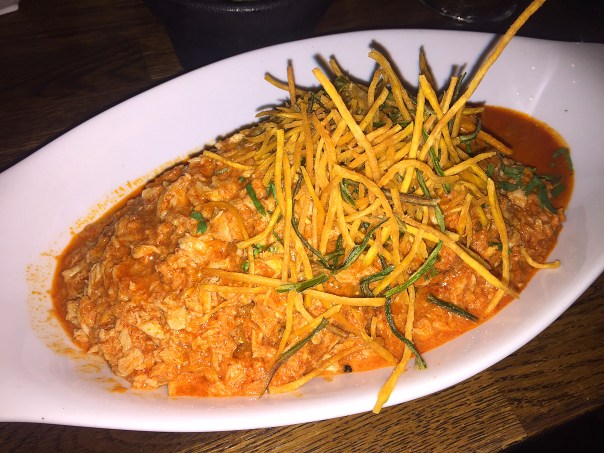
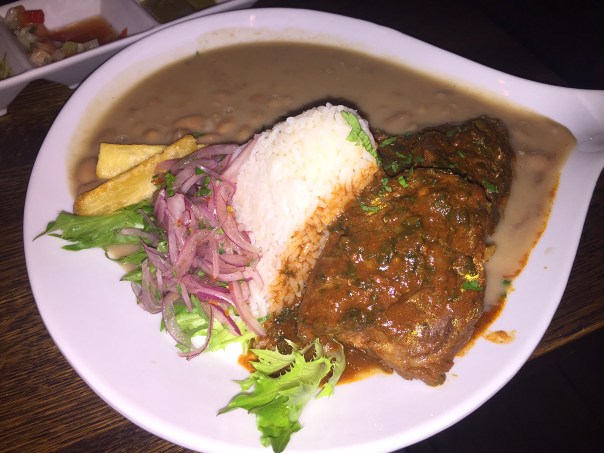


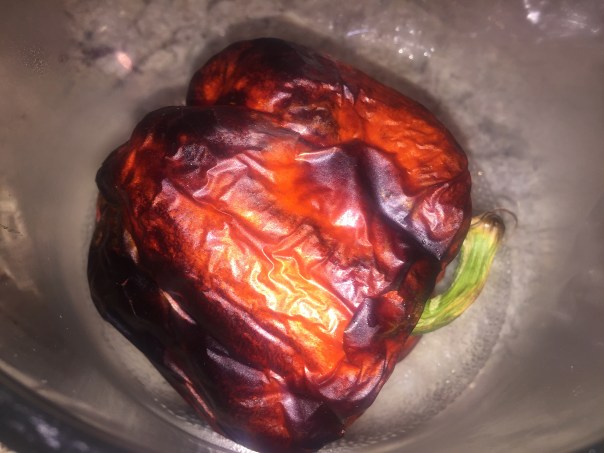 The charred pepper after it was blackened, cools in a plastic wrap covered bowl.
The charred pepper after it was blackened, cools in a plastic wrap covered bowl.

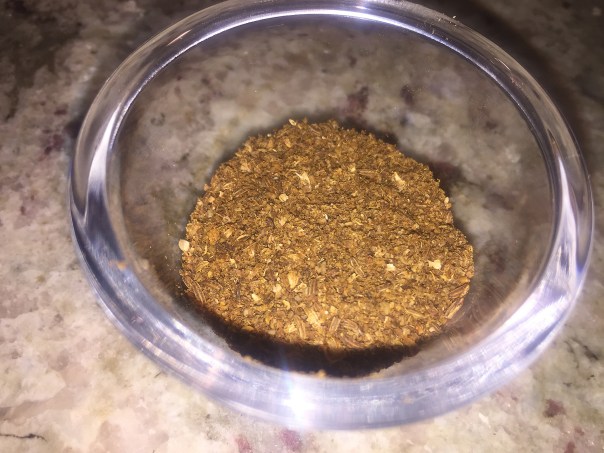


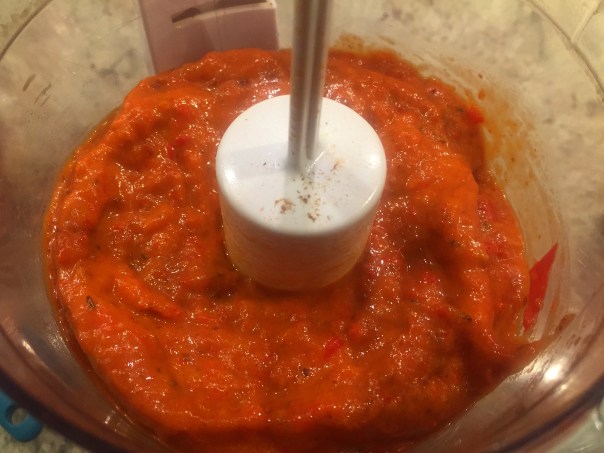



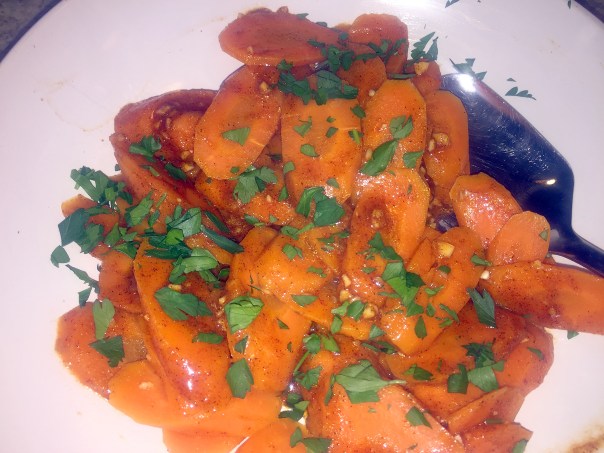



 Here’s how the pesto looked before I realized it was missing the grated parm.
Here’s how the pesto looked before I realized it was missing the grated parm. Once the cheese was added, the pesto is much more robust!
Once the cheese was added, the pesto is much more robust!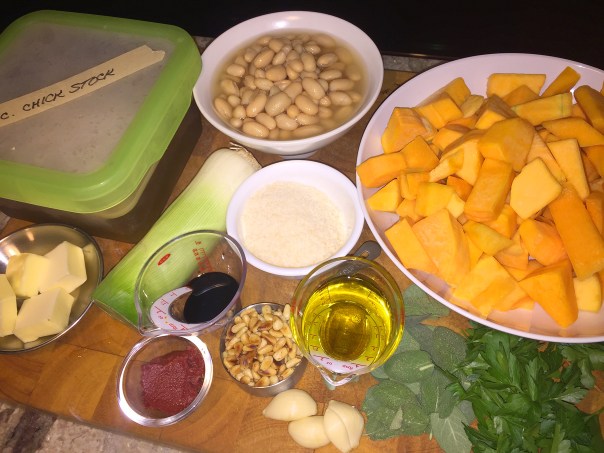
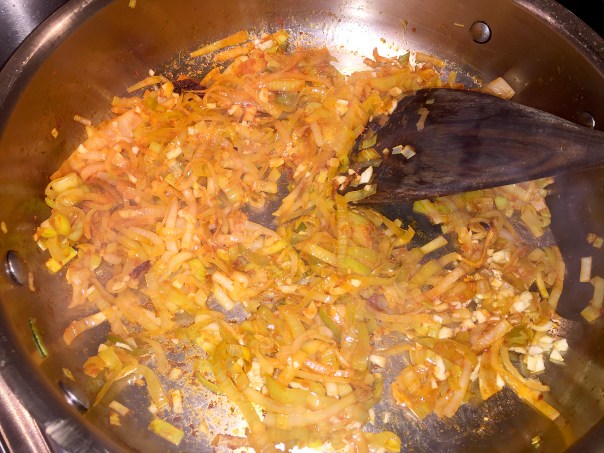

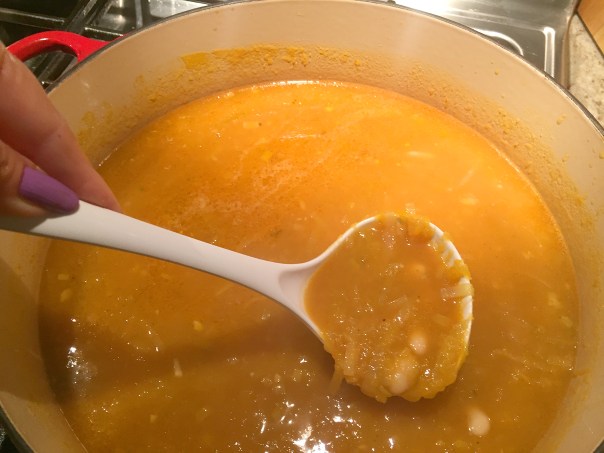


 Just look at these golden, mouth-watering chops!
Just look at these golden, mouth-watering chops!


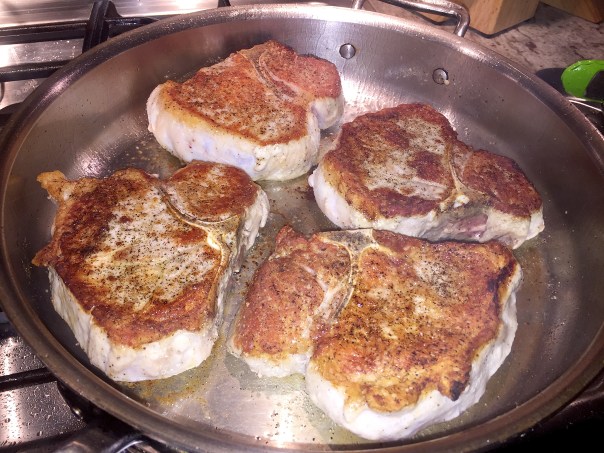
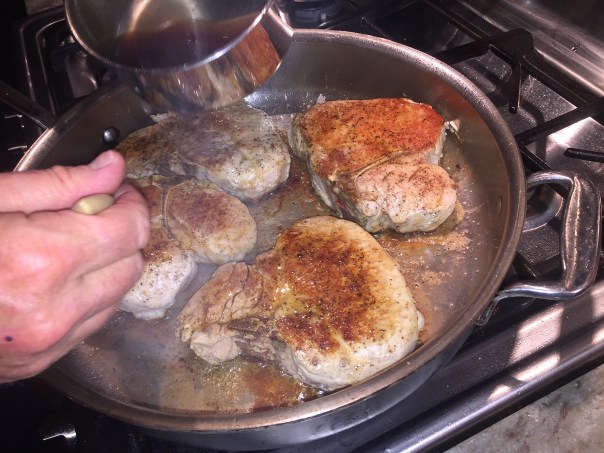





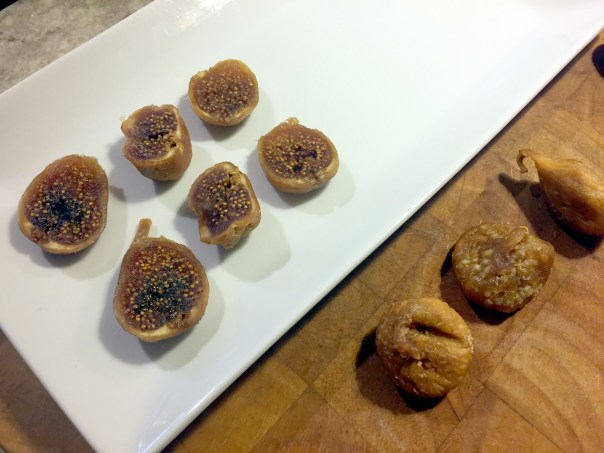






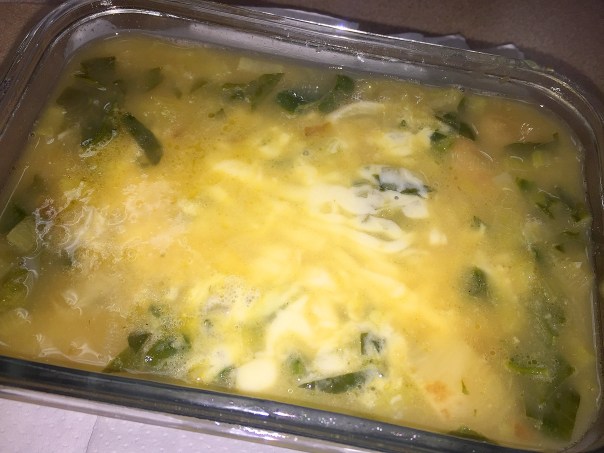




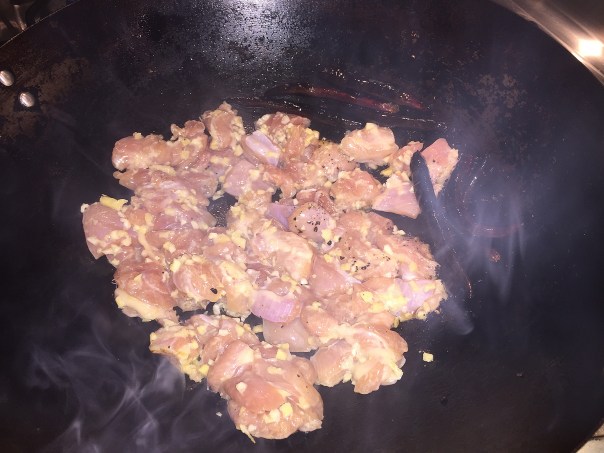





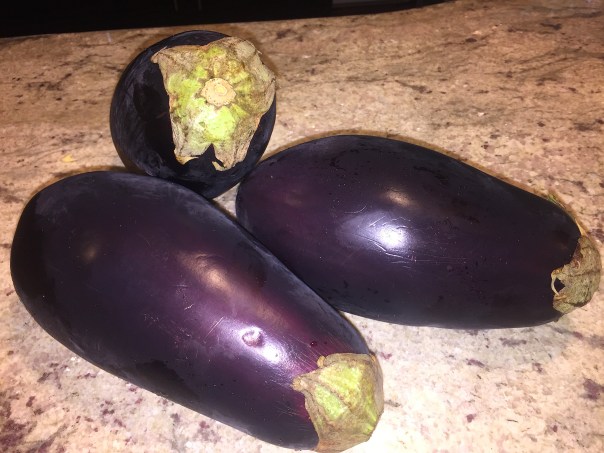


 After the red onion becomes translucent, add the tablespoon of tomato paste.
After the red onion becomes translucent, add the tablespoon of tomato paste.


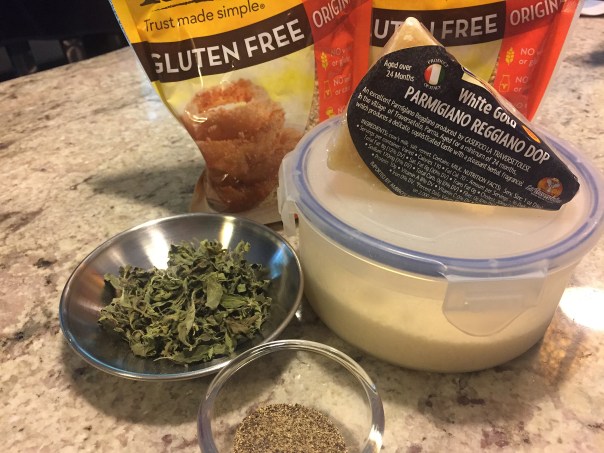
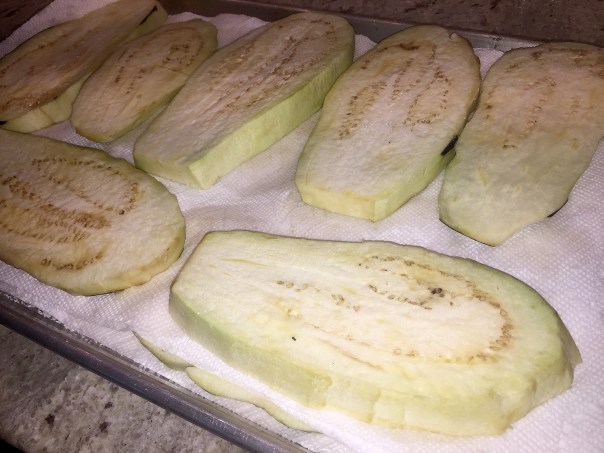
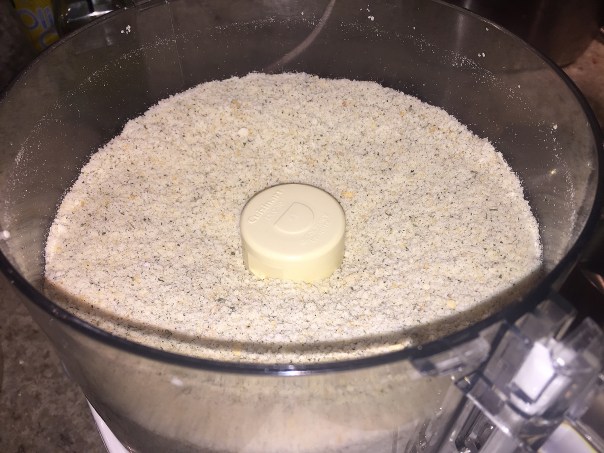
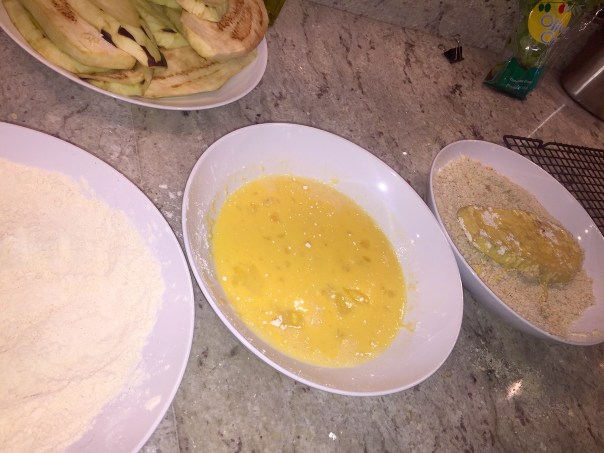


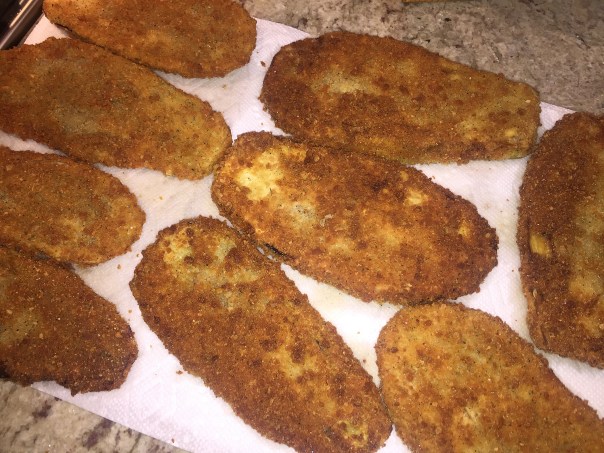
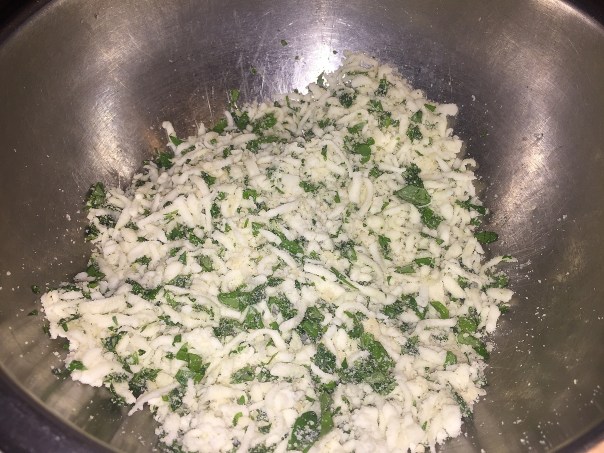


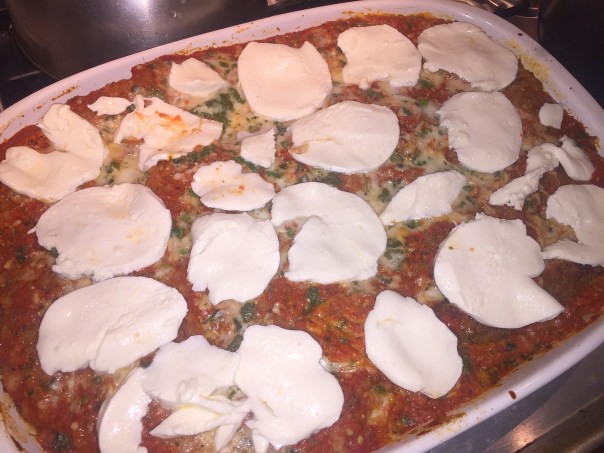
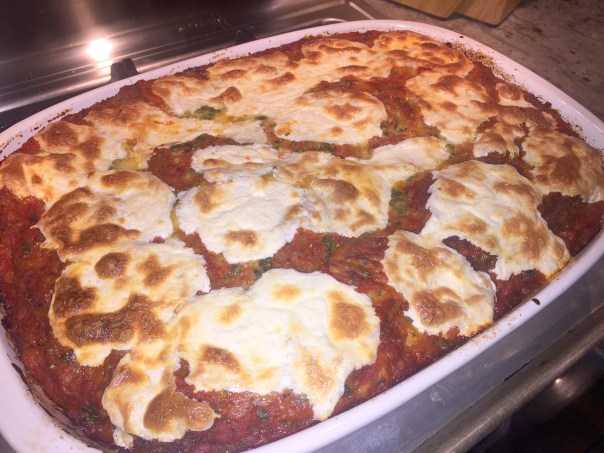




 A large moose head can be seen hanging near the cathedral ceiling between Ken and Kim.
A large moose head can be seen hanging near the cathedral ceiling between Ken and Kim.



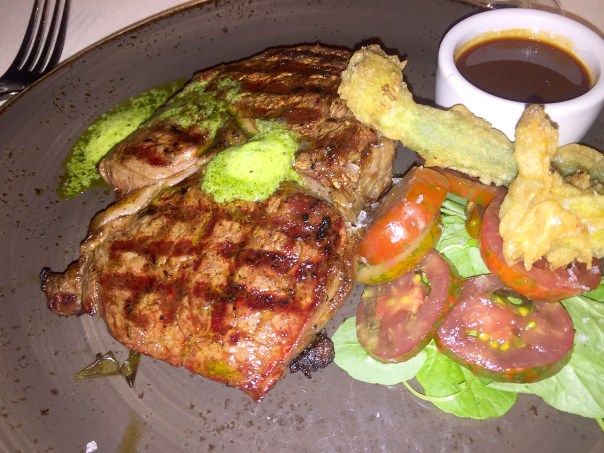


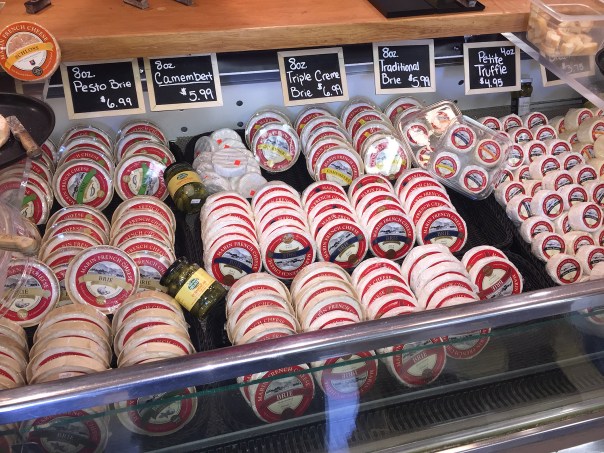
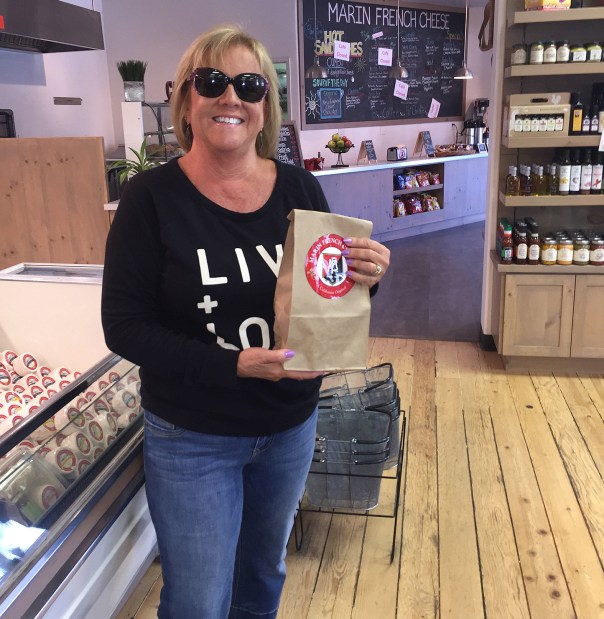




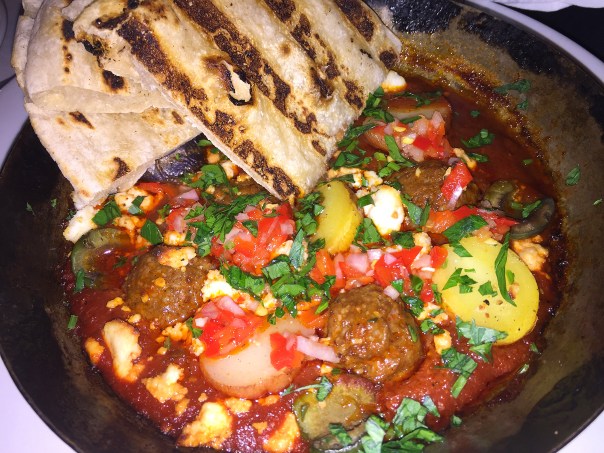
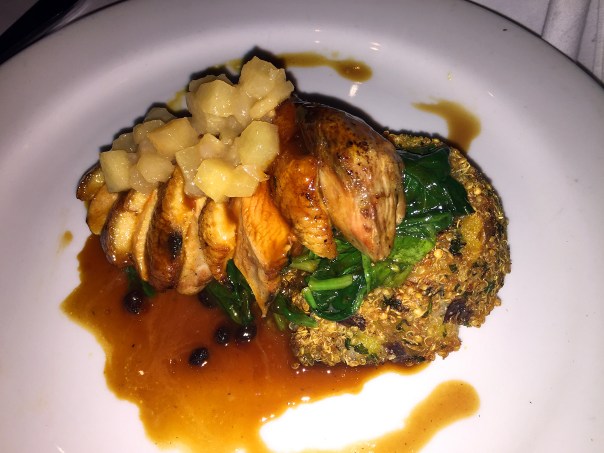







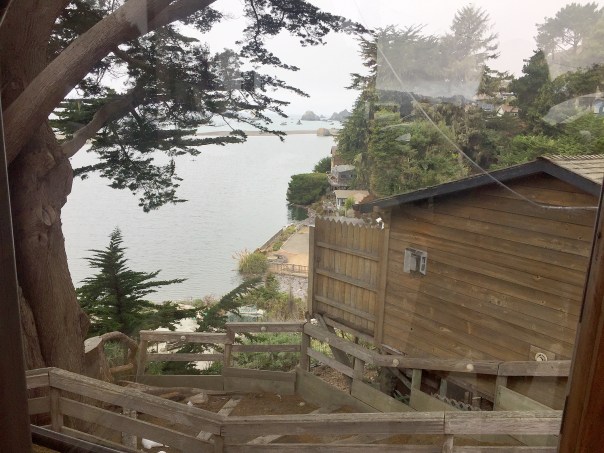

















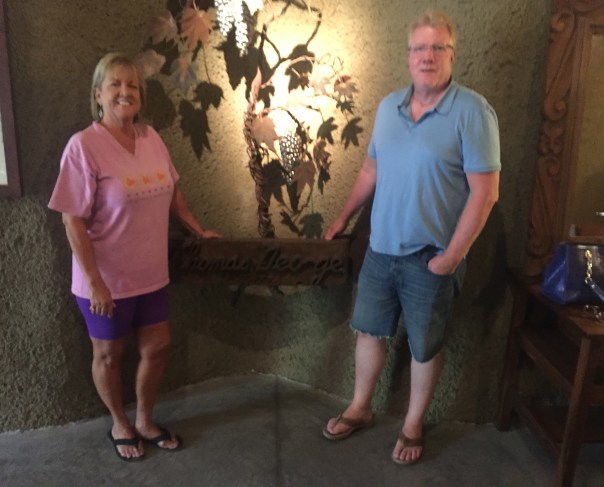





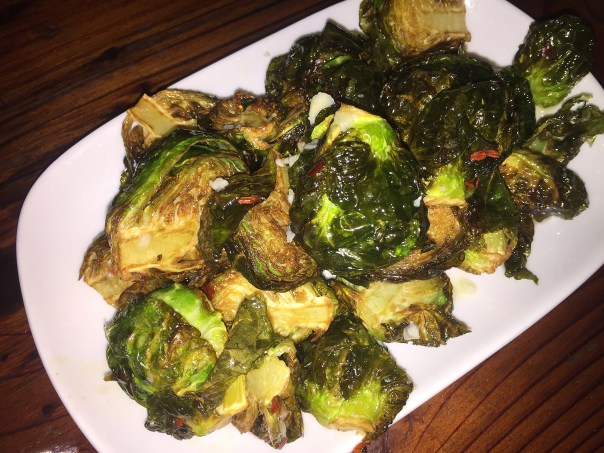

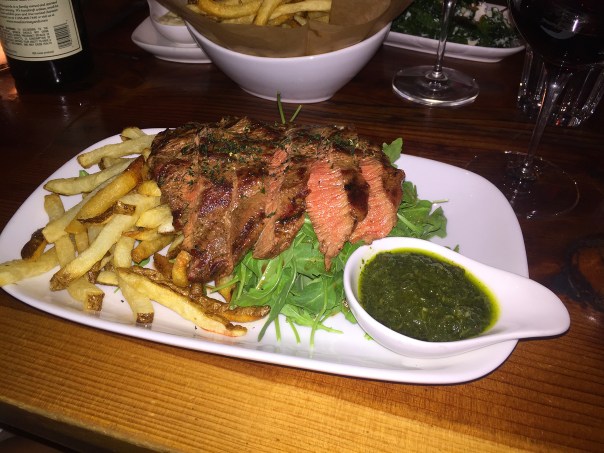

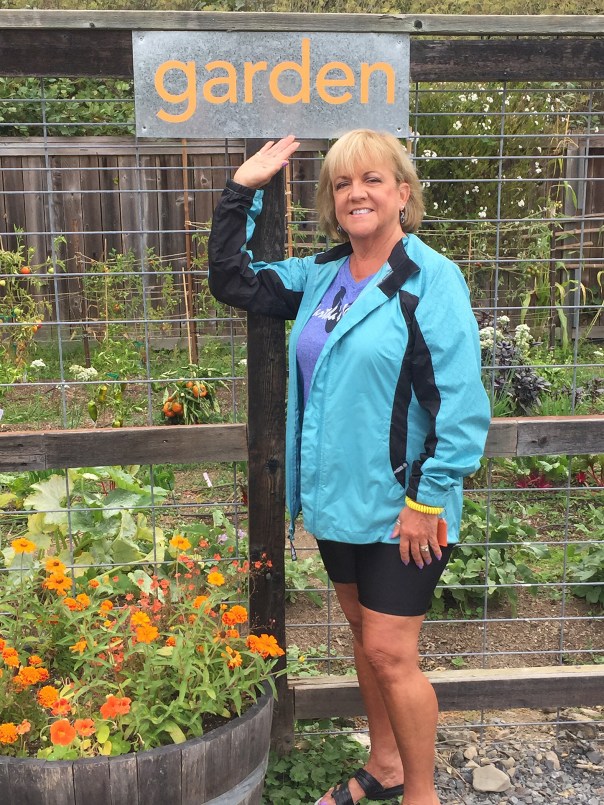




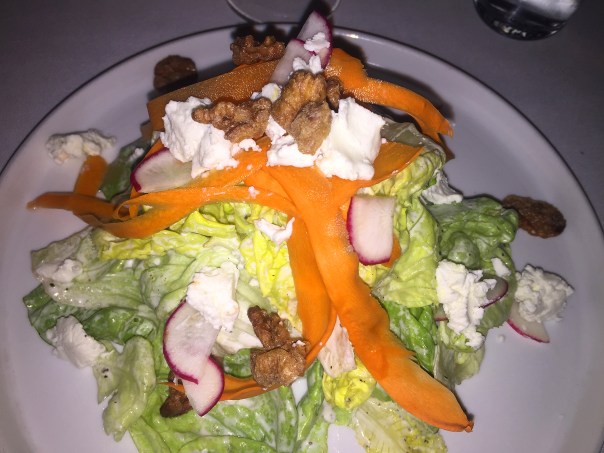

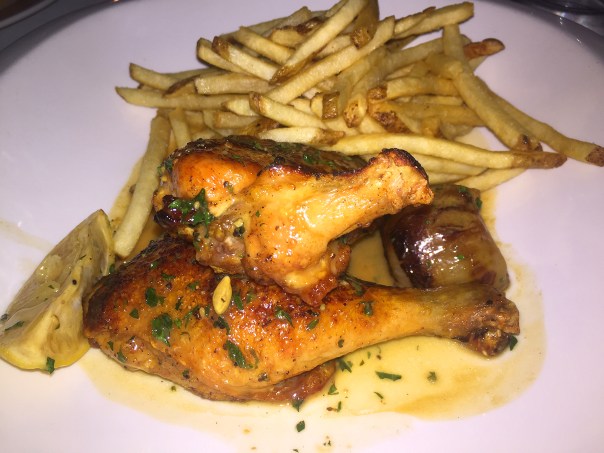
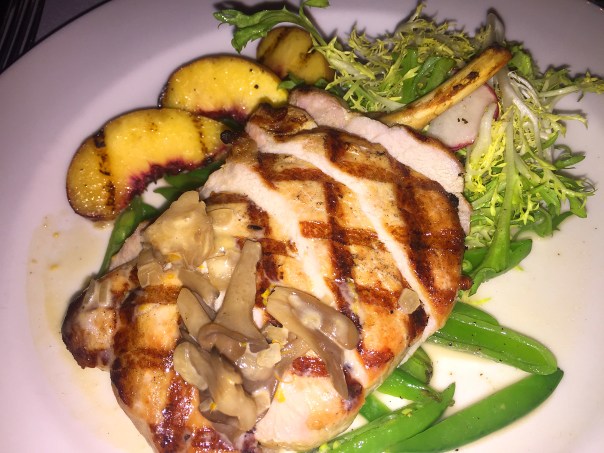


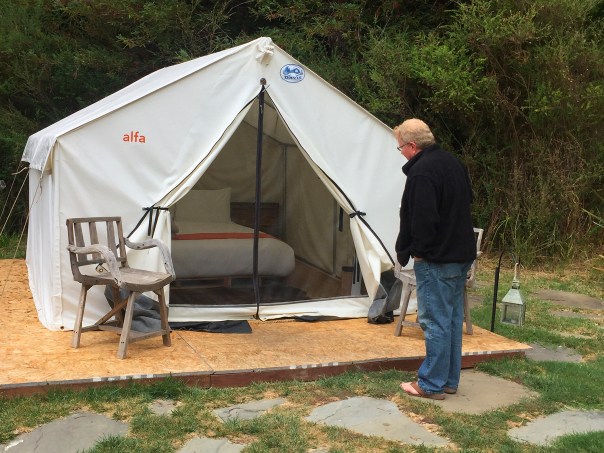

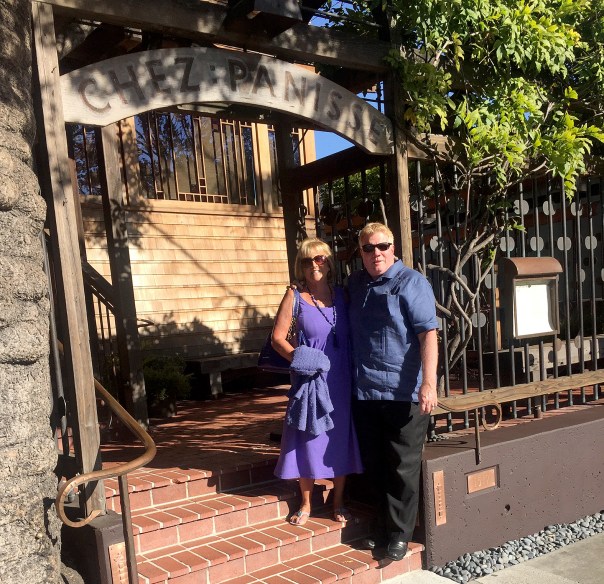

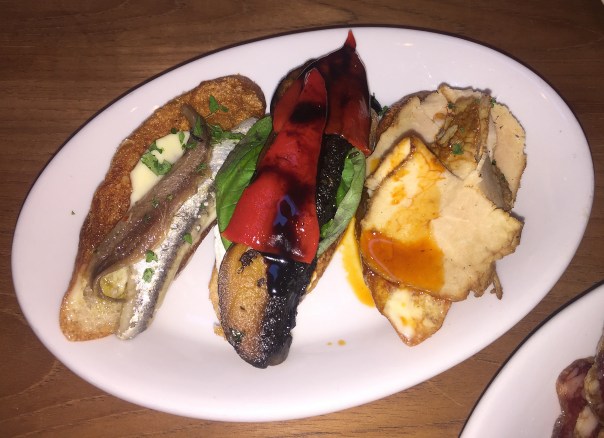
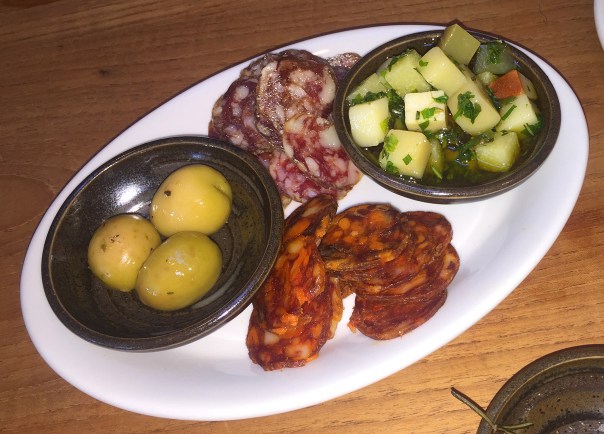









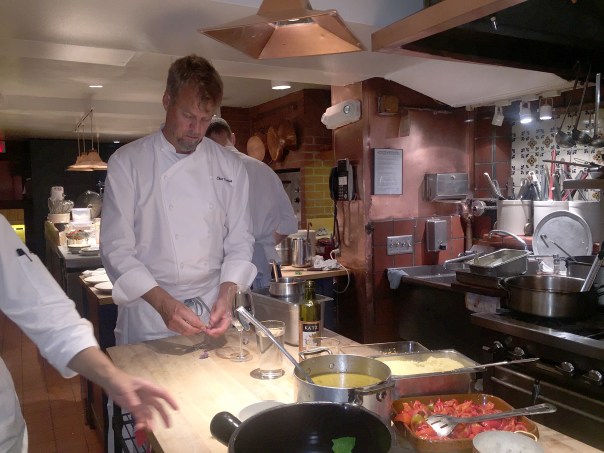
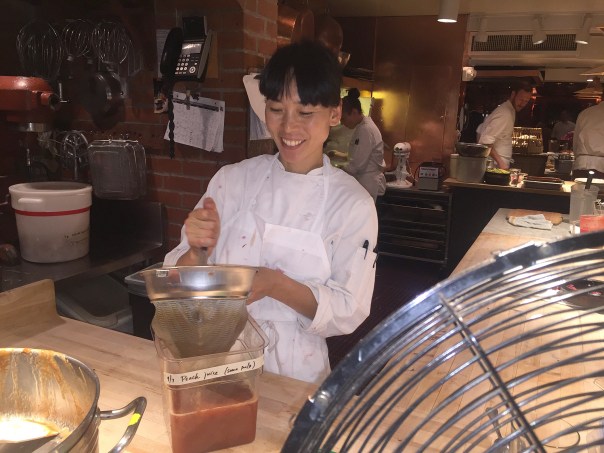
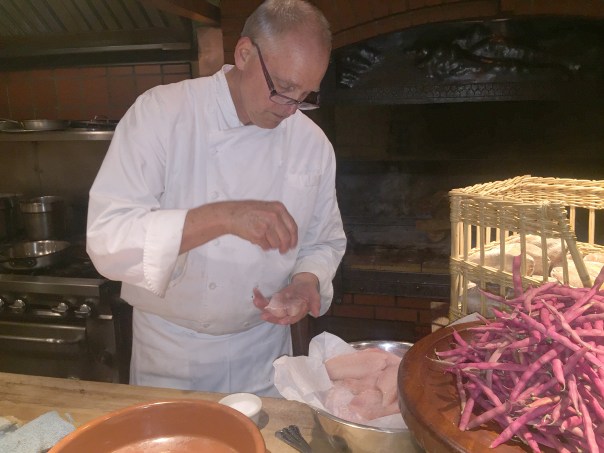
On a side note, Kim Cochrane (our sister-in-law who lives in Marin County) told us that she actually talked with Alice Waters via the phone to discuss the creation of their sustainable, organic garden that Kim and her colleagues designed at the school where she teaches special ed. Now if she can only obtain a photo op!
On our way home from Berkley, David wanted to show us another Bay Area icon, this one in Oakland. Heinold’s First and Last Chance is a tiny waterfront saloon opened by Johnny Heinold in 1883 on Jack London Square. The name “First and Last Chance” refers to the time in which for many sailors, the pub was the first and last chance to drink alcohol heavily before or after a long voyage.
The view from this angle doesn’t look like much.
Our last chance for the evening…
It also known as “Jack London’s Rendezvous,” as it was the inspiration for scenes from the Oakland writer’s novels Call of the Wild and The Sea Wolf. The pub in its original form was built from the remnants of an old whaling ship at the foot of Webster Street in Oakland, where it remains today. It was originally designed as sleeping quarters for the workers of the nearby oyster beds.
This huge mastiff seemed to be the bar mascot, with his own beverages of choice.
As David explained, Heinold’s floor collapsed during the great earthquake of 1906 and it has not been fixed since! If you sit on one of only 4 bar stools, you are at a steep angle—which self-corrects your posture after a couple of drinks.
Heinold’s is the last commercial establishment in California with its original gas lighting. The tables came from a whaling ship and the walls and ceilings are covered with business cards, hats of past patrons and money, often signed by sailors about to deploy so they would have money for a drink waiting for them upon their return. Now, is that thinking ahead, or what?